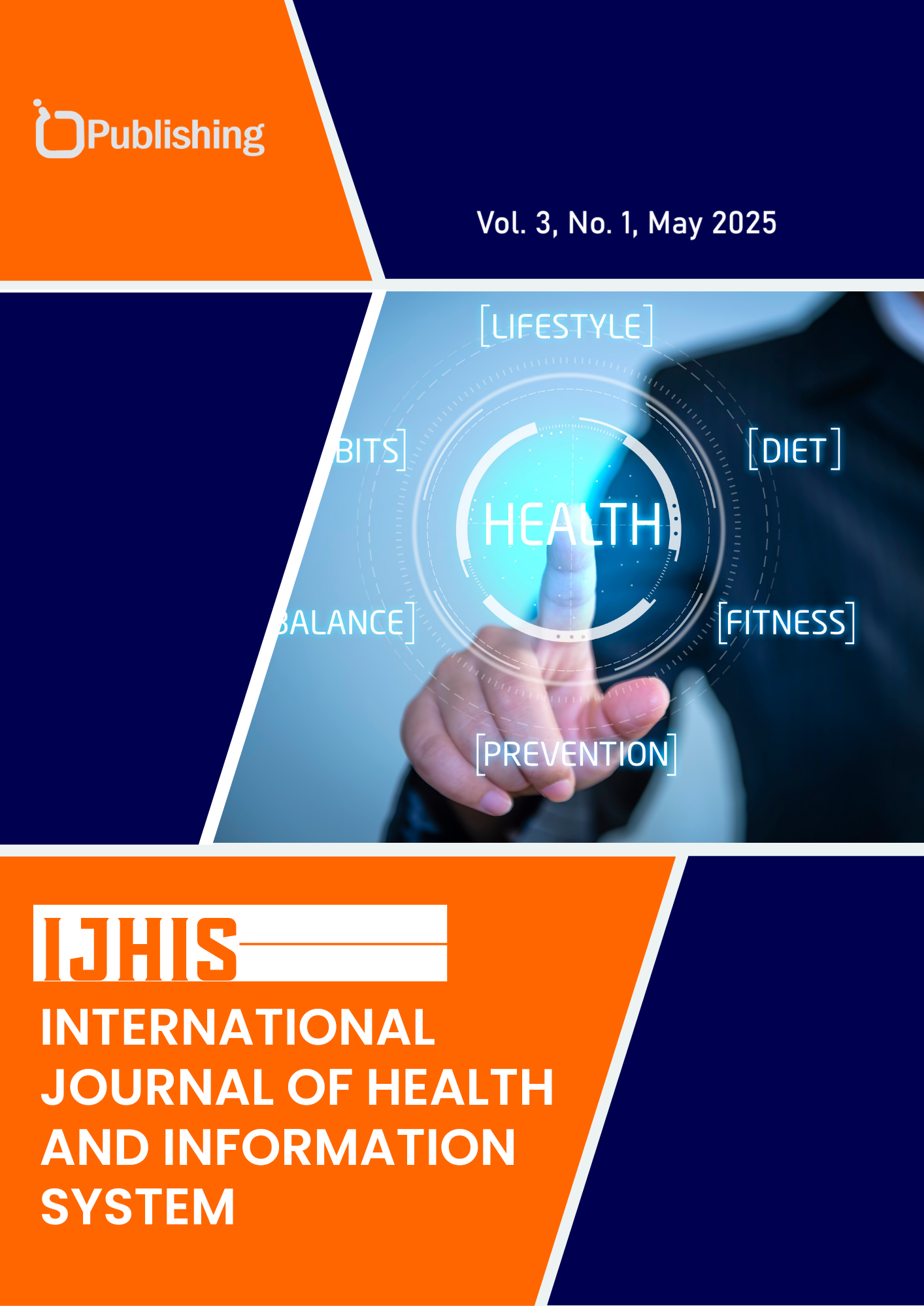The Correlation Between Low Birth Weight And Stunting Incidence In Balet Baru Village, Sukowono District, Jember Regency
DOI:
https://doi.org/10.47134/ijhis.v3i1.69Keywords:
low birth weight, stunting, toddlersAbstract
Stunting is an indicator of chronic nutritional disorders and is still a complex public health problem. One of the direct risk factors for stunting is Low Birth Weight (LBW). This study is an analytical observational study that aims to determine the correlation between the history of Low Birth Weight (LBW) and the incidence of stunting in toddlers. The research was carried out in Balet Baru Village, Sukowono District, Jember Regency. The population in this study were all children aged 6 months to 5 years who are recorded in the Maternal and Child Health (KIA) register in Balet Baru Village. The total number of research subjects was 168 toddlers in a case-control design. Bivariate analysis is used to determine the relationship between LBW history and stunting incidence using the Chi-Square test. The results of the analysis showed a p-value of 0.002 (p < 0.05), which means that there is a statistically significant correlation between the history of LBW and the incidence of stunting in children aged 6 months to 5 years. An odds ratio (OR) value of 4.640 shows that children with a history of LBW have a 4.64 times greater risk of stunting than children without a history of LBW.
References
1. Kemenkes RI. (2022). Kemenkes ri no hk.01.07/menkes/1928/2022 tentang pedoman nasional pelayanan kedokteran tata laksana stunting. Kementerian Kesehatan Republik Indonesia, 1–52.
2. Apriastini, N. K. T., N. P. T. Adnyani, P. O. Selvyani, dan K. H. Setiawan. 2024. Stunting: faktor risiko, diagnosis, tatalaksana, dan prognosis. Ganesha Medicine. 4(1):17–23.
3. Rahmawati, L.A., Hardy, F. R., dan Anggraeni, A. 2020. ‘Faktor-Faktor yang Berhubungan dengan Stunting Sangat Pendek dan Pendek pada Anak Usia 24-59 Bulan di Kecamatan Sawah Besar’, Jurnal Ilmiah Kesehatan Masyarakat, 12(2), pp. 68-78.
4. Laksono, A. D., E. W. Muis, dan R. D. Wulandari. (2024). Policy to Reduce Under Two Stunting in East Java Region, Indonesia: Who Is the Right Target. The Indonesian Journal of Public Health, 19(2). https://doi.org/https://doi.org/10.20473/ijph.v19i2.2024.263-275
5. Montenegro, C. R., Gomez, G., Hincapie, O., Dvoretskiy, S., DeWitt, T., Gracia, D., & Misas, J. D. (2022). The pediatric global burden of stunting: Focus on Latin America. Lifestyle Medicine, 3(3), 1–11.
6. Sholihah, S. C. 2023. Hubungan berat badan lahir rendah (bblr) terhadap kejadian stunting di wilayah kerja puskesmas dradah. Prepotif: Jurnal Kesehatan Masyarakat. 7(1):135–140
7. Amalia, S., & Ismarwati. (2023). Association between low birth weight and stunting incidence: scoping review. Jurnal Ilmu Kesehatan, 17(2), 369–378. https://doi.org/https://doi.org/10.33860/jik.v17i2.2171
8. Dahlan, M. S. (2016). Besar Sampel dalam Penelitian Kedokteran dan Kesehatan. Epidemiologi Indonesia.
9. de Onis, M., & Branca, F. (2016). Childhood stunting: A global perspective. Maternal and Child Nutrition, 12, 12–26. https://doi.org/10.1111/mcn.12231
10. Halli, S. S., Biradar, R. A., & Prasad, J. B. (2022). Low Birth Weight, the Differentiating Risk Factor for Stunting among Preschool Children in India. International Journal of Environmental Research and Public Health, 19(7), 3751. https://doi.org/10.3390/ijerph19073751
11. Bening, S., A. Margawati, dan A. Rosidi. 2016. Konsumsi Gizi Makro dan Mikro sebagai Faktor Risiko Stunting Anak Usia 2-5 Tahun di Semarang. Jurnal of Medicine, 4 (1): 45-50. DOI: https://doi.org/10.36408/mhjcm.v4i1.245
12. Putri, A. W., A. Pratitis., L. Luthfiya., S. Wahyuni, dan Tarmali, A. 2019. Faktor Ibu Terhadap Kejadian Bayi Berat Lahir Rendah. Higeia Journal of Public Health Research and Development, 3(1): 55–62.
13. Manggala, A. K., Kenwa, K. W. M., Kenwa, M. M. L., Sakti, A. A. G. D. P. J., & Sawitri, A. A. S. (2018). Risk factors of stunting in children aged 24-59 months. Paediatricia Indonesiana, 58(5), 205–212. https://doi.org/https://doi.org/10.14238/pi58.5.2018.205-12
14. Laksono, A. D., R. D. Wulandari, N. Amaliah, dan R. W. Wisnuwardani. 2022. Stunting among children under two years in indonesia: does maternal education matter? PLoS ONE. 17(7 July):1–11.
15. Sari, I. P., Y. Ardillah, dan A. Rahmiwati. 2020. Berat bayi lahir dan kejadian stunting pada anak usia 6-59 bulan di kecamatan seberang ulu i palembang. Jurnal Gizi Indonesia (The Indonesian Journal of Nutrition). 8(2):110–118.
16. Soliman, N., A. Soliman, F. Alyafei, S. Elsiddig, N. Alaaraj, N. Hamed, S. Mohamed, dan M. Itani. 2024. Persistent global burden of stunting among children. European Journal of Medical and Health Sciences. 6(2):15–20.
17. Beal, T., A. Tumilowicz, A. Sutrisna, D. Izwardy, dan L. M. Neufeld. 2018. A review of child stunting determinants in indonesia. Maternal and Child Nutrition. 14(4):1–10.
18. Setiawan, A. S., Indriyanti, R., Suryanti, N., Rahayuwati, L., & Juniarti, N. (2022). Neonatal stunting and early childhood caries: A mini-review. Frontiers in Pediatrics, 10, 871862. https://doi.org/https://doi.org/10.3389/fped.2022.871862
19. Wijayanti, E. E. 2019. Hubungan Antara BBLR, ASI Eksklusif dengan Kejadian Stunting Pada Balita Usia 2-5 Tahun. Jurnal Kesehatan Dr. Soebandi, 7(1): 36-41.
20. Suyami, Khayati, F. N., & Wahyuningsih, T. (2023). Hubungan Riwayat Bayi Berat Lahir Rendah (BBLR) dengan Kejadian Stunting pada Balita USIA 24-59 Bulan di Wilayah Kerja Puskesmas Karangdowo. COHESIN, 1(1), 8–21.
21. Musni, M., Fatimah, S., & Mutmainnah, M. (2024). Birth Length, Diarrheal and Acute Respiratory Infection Risk of Stunting in Toddlers. Journal La Medihealtico, 5(1), 15-21.https://doi.org/10.37899/journallamedihealtico.v5i1.947
22. Dayani, T. R., & Widyantari, K. Y. (2024). Maternal risk factors for stunting in children aged 24-59 months. International Journal of Public Health, 13(3), 1366-1373.
23. Suyanto S, Wahyuni S, Zulharman Z, et al. Understanding stunting risk factors in Kampar Regency: Insights from mothers with stunted children (qualitative study). SAGE Open Medicine. 2024;12. doi:10.1177/20503121241244662
Downloads
Published
How to Cite
Issue
Section
License
Copyright (c) 2025 Dwita Aryadina Rachmawati, Rena Normasari, Eny Nurmaida, Arsyzilma Hakiim, Yohanes Sudarmanto, Dita Diana Parti, Kristianningrum Dian Sofiana, Ida Srisurani Wiji Astuti, Elvia Rahmi Marga Putri, Nurfaizah Titisari Sulihah

This work is licensed under a Creative Commons Attribution-ShareAlike 4.0 International License.







